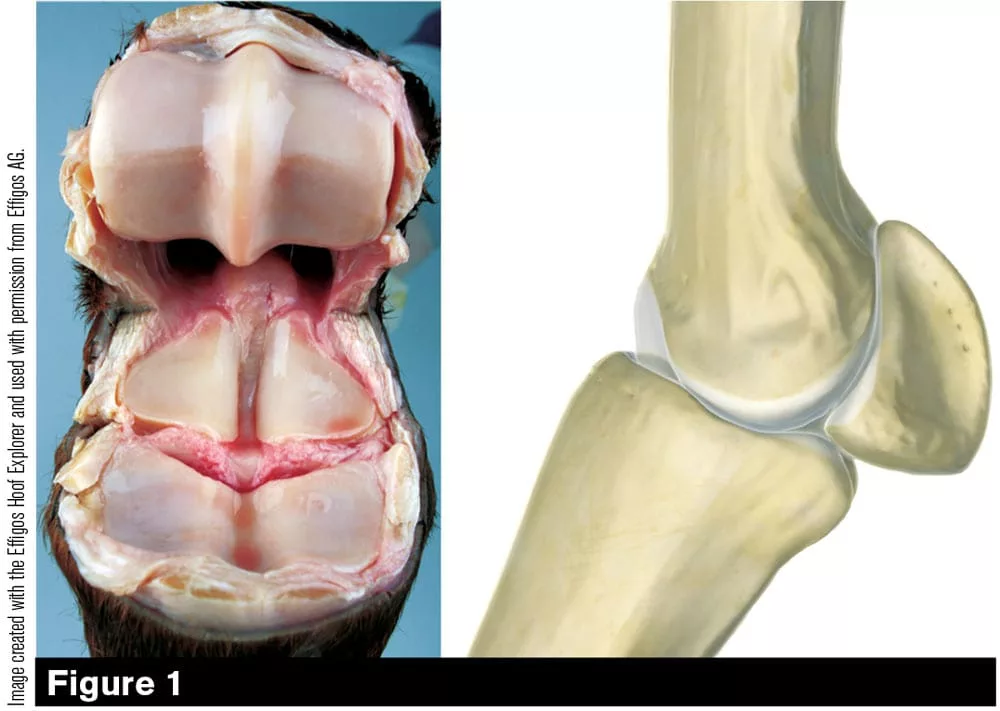American Farriers Journal
American Farriers Journal is the “hands-on” magazine for professional farriers, equine veterinarians and horse care product and service buyers.

To understand the biomechanics of the equine distal limb and the pathogenesis, diagnostics and treatment of orthopedic disorders affecting this region, comprehensive anatomical knowledge is essential.
The equine distal limb is defined as the part of the extremity located distal to the carpal or tarsal joint.1 In this region, numerous structures that are composed of different, highly specialized tissues are arranged in complex three-dimensional construction. These structures are bones, joints, tendons, ligaments, synovial structures, blood vessels, nerves and the hoof as modified skin covering the end of the extremity.2 All structures are spatially and functionally closely related.3
Optimal functional performance of the equine distal limb for static support and locomotion requires a fine-tuned interaction of all elements of the distal limb. The arrangement and function of all structures of the equine distal limb are adapted to the maximal erected digitigrade posture used for weight-bearing and locomotion.4
The digitigrade posture of the distal limb is characteristic for animals that have the ability to move at high speed.5,6 Their metacarpal/metatarsal bones are maximally…